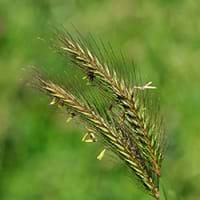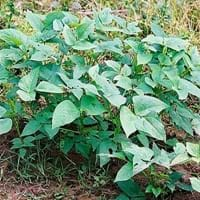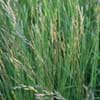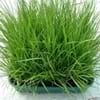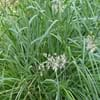Life Span
Perennial
Perennial
Origin
North America, South America, Europe, Southern Africa, Asia
Africa
Types
Not Available
Yardlong Bean
Black-Eyed Peas
Catjang
Dixie Lee Pea
Number of Varieties
Not Available
Habitat
meadows, Pastures, Wet lands
Fertile bottom land
USDA Hardiness Zone
Not Available
Not Available
AHS Heat Zone
Not Available
Not Available
Sunset Zone
Not Available
A1, A2, A3, H1, H2, 1a, 1b, 2a, 2b, 3a, 3b, 4, 5, 6, 7, 8, 9, 10, 11, 12, 13, 14, 15, 16, 17, 18, 19, 20, 21, 22, 23, 24
Habit
Not Available
Not Available
Minimum Height
Not Available
Flower Color
Yellow Brown
White, Pink, Lavender
Flower Color Modifier
Bicolor
Bicolor
Fruit Color
Not Available
White, Red, Green, Purple, Brown, Black
Leaf Color in Spring
Green, Light Green, Blue Green, Gray Green
Green, Purple
Leaf Color in Summer
Light Green
Green, Purple
Leaf Color in Fall
Not Available
Green, Purple
Leaf Color in Winter
Not Available
Green, Purple
Leaf Shape
Oblong
Deltoid
Plant Season
Not Available
Spring, Summer, Fall, Winter
Sunlight
Full Sun
Full Sun, Partial Sun
Type of Soil
Loam, Sand
Loam, Sand
The pH of Soil
Not Available
Acidic, Neutral, Alkaline
Soil Drainage
Well drained
Well drained
Bloom Time
Spring, Summer
Indeterminate
Tolerances
Deer resistant, Drought, Salt
Drought
Where to Plant?
Ground
Ground
How to Plant?
Seedlings
Seedlings
Plant Maintenance
Medium
Medium
Watering Requirements
Keep the ground moist but not water-logged
Average Water Needs
In Summer
Less Watering
Lots of watering
In Spring
Moderate
Moderate
In Winter
Lots of watering
Average Water
Soil pH
Not Available
Acidic, Neutral, Alkaline
Soil Type
Loam, Sand
Loam, Sand
Soil Drainage Capacity
Well drained
Well drained
Sun Exposure
Full Sun
Full Sun, Partial Sun
Pruning
No pruning needed in the early stages, Remove damaged leaves, Remove dead branches, Remove dead leaves
Remove damaged leaves, Remove dead branches, Remove dead flowers, Remove dead leaves, Remove dead or diseased plant parts, Remove deadheads
Fertilizers
avoid high rate of nitrogen in spring, Nitrogen
Any balanced general purpose fertilizer
Pests and Diseases
Fungal Diseases, Head smut, Leaf rust, Stem rot
Nematodes, Red blotch
Plant Tolerance
Deer resistant, Drought, Salt
Drought
Flowers
Not Available
Insignificant
Flower Petal Number
Single
Single
Edible Fruit
Not Available
Yes
Foliage Texture
Fine
Medium
Foliage Sheen
Matte
Matte
Attracts
Bees, Birds, Butterflies
Not Available
Allergy
Not Available
Legume allergy
Aesthetic Uses
Ground Cover
Not Used For Aesthetic Purpose
Beauty Benefits
Improve skin condition
Not Available
Environmental Uses
Erosion control, Food for animals, soil stabilisation
Air purification
Medicinal Uses
Not Available
Diuretic, Stomachic
Part of Plant Used
Seeds
Seedpod, Seeds
Other Uses
Food for animals
Not Available
Used As Indoor Plant
No
No
Used As Outdoor Plant
Yes
Yes
Garden Design
Cutflower, Dried Flower/Everlasting, Edible, Wildflower
Edible, Herb, Vegetable, Tropical
Botanical Name
Hordeum brachyantherum
VIGNA unguiculata
Common Name
Meadow Barley
Blackeyed Pea
Cowpea
In Hindi
meadow barley
लोबिया
In German
Wiese Gerste
cowpea
In French
orge prairie
niébé
In Spanish
cebada prado
caupí
In Greek
λιβάδι κριθάρι
cowpea
In Portuguese
cevada prado
Koopea
In Polish
łąka jęczmienia
Koopea
In Latin
pratum hordei
Koopea
Phylum
Magnoliophyta
Tracheophyta
Class
Liliopsida
Magnoliopsida
Clade
Angiosperms, Commelinids, Monocots
Angiosperms, Eudicots, Rosids
Tribe
Not Available
Not Available
Subfamily
Not Available
Not Available
Number of Species
Not Available
Season and Care of Meadow Barley and Cowpea
Season and care of Meadow Barley and Cowpea is important to know. While considering everything about Meadow Barley and Cowpea Care, growing season is an essential factor. Meadow Barley season is Not Available and Cowpea season is Not Available. The type of soil for Meadow Barley is Loam, Sand and for Cowpea is Loam, Sand while the PH of soil for Meadow Barley is Not Available and for Cowpea is Acidic, Neutral, Alkaline.
Meadow Barley and Cowpea Physical Information
Meadow Barley and Cowpea physical information is very important for comparison. Meadow Barley height is Not Available and width Not Available whereas Cowpea height is 90.00 cm and width Not Available. The color specification of Meadow Barley and Cowpea are as follows:
Meadow Barley flower color: Yellow Brown
Meadow Barley leaf color: Green, Light Green, Blue Green and Gray Green
Cowpea flower color: White, Pink and Lavender
- Cowpea leaf color: Green and Purple
Care of Meadow Barley and Cowpea
Care of Meadow Barley and Cowpea include pruning, fertilizers, watering etc. Meadow Barley pruning is done No pruning needed in the early stages, Remove damaged leaves, Remove dead branches and Remove dead leaves and Cowpea pruning is done Remove damaged leaves, Remove dead branches, Remove dead flowers, Remove dead leaves, Remove dead or diseased plant parts and Remove deadheads. In summer Meadow Barley needs Less Watering and in winter, it needs Lots of watering. Whereas, in summer Cowpea needs Lots of watering and in winter, it needs Average Water.
